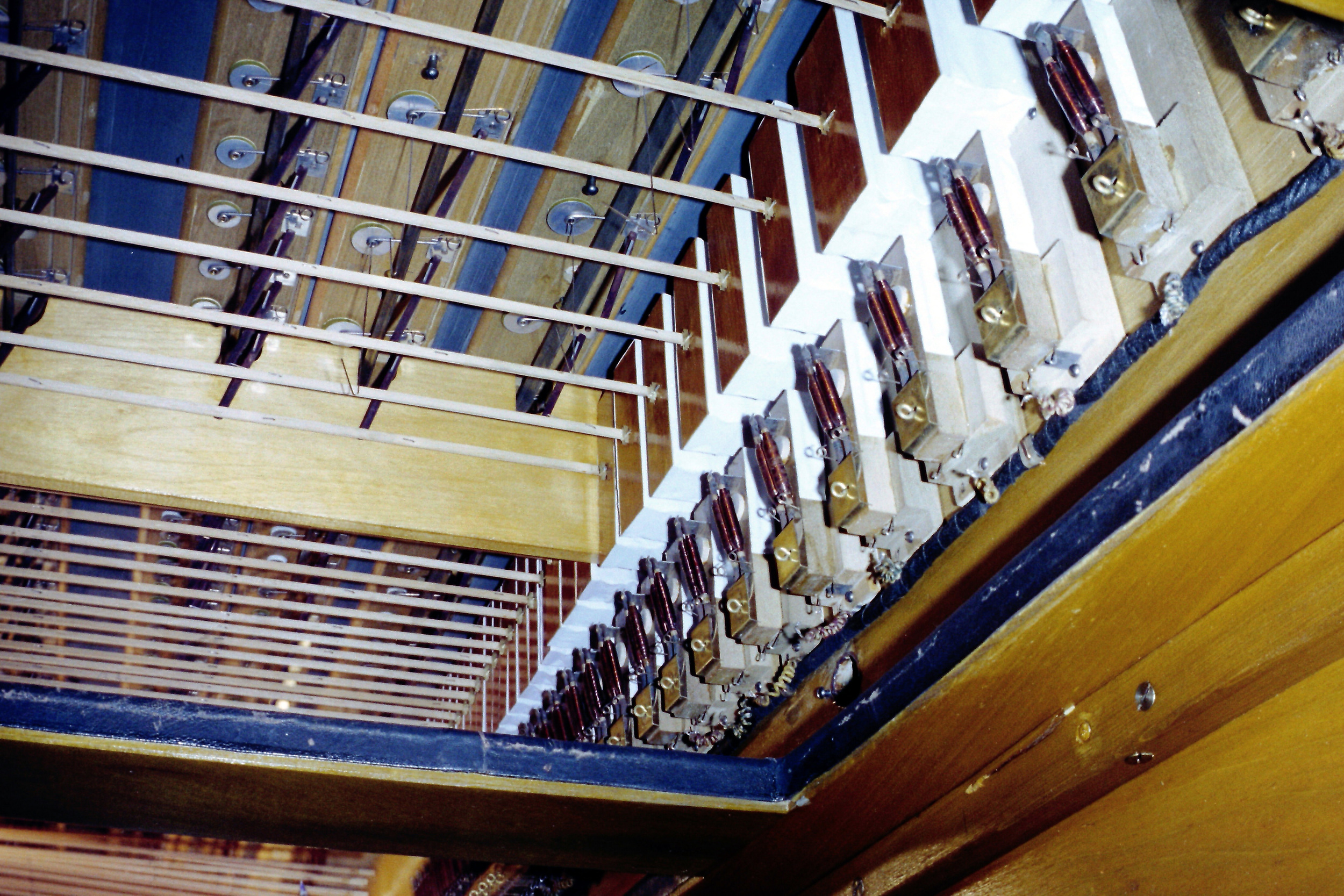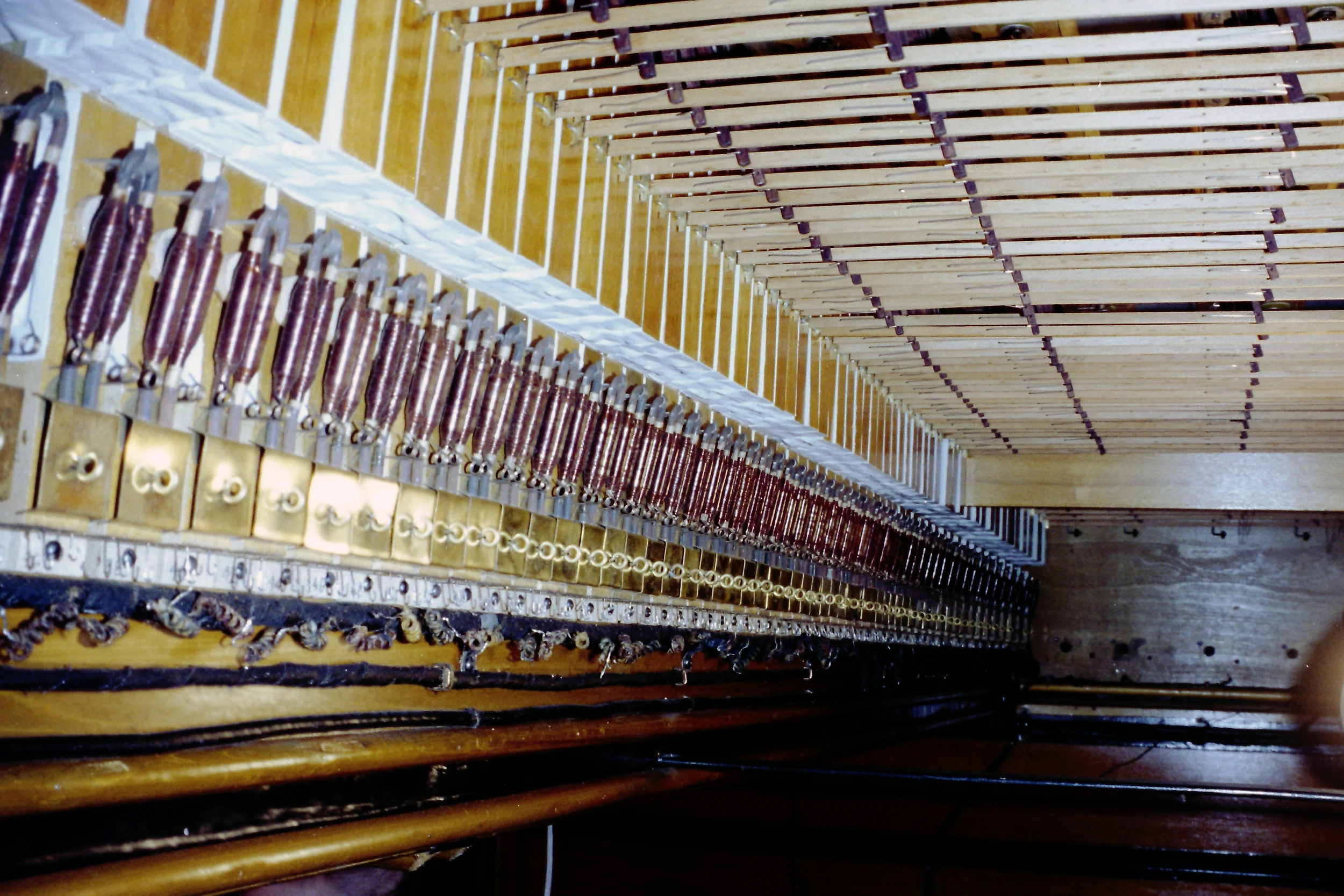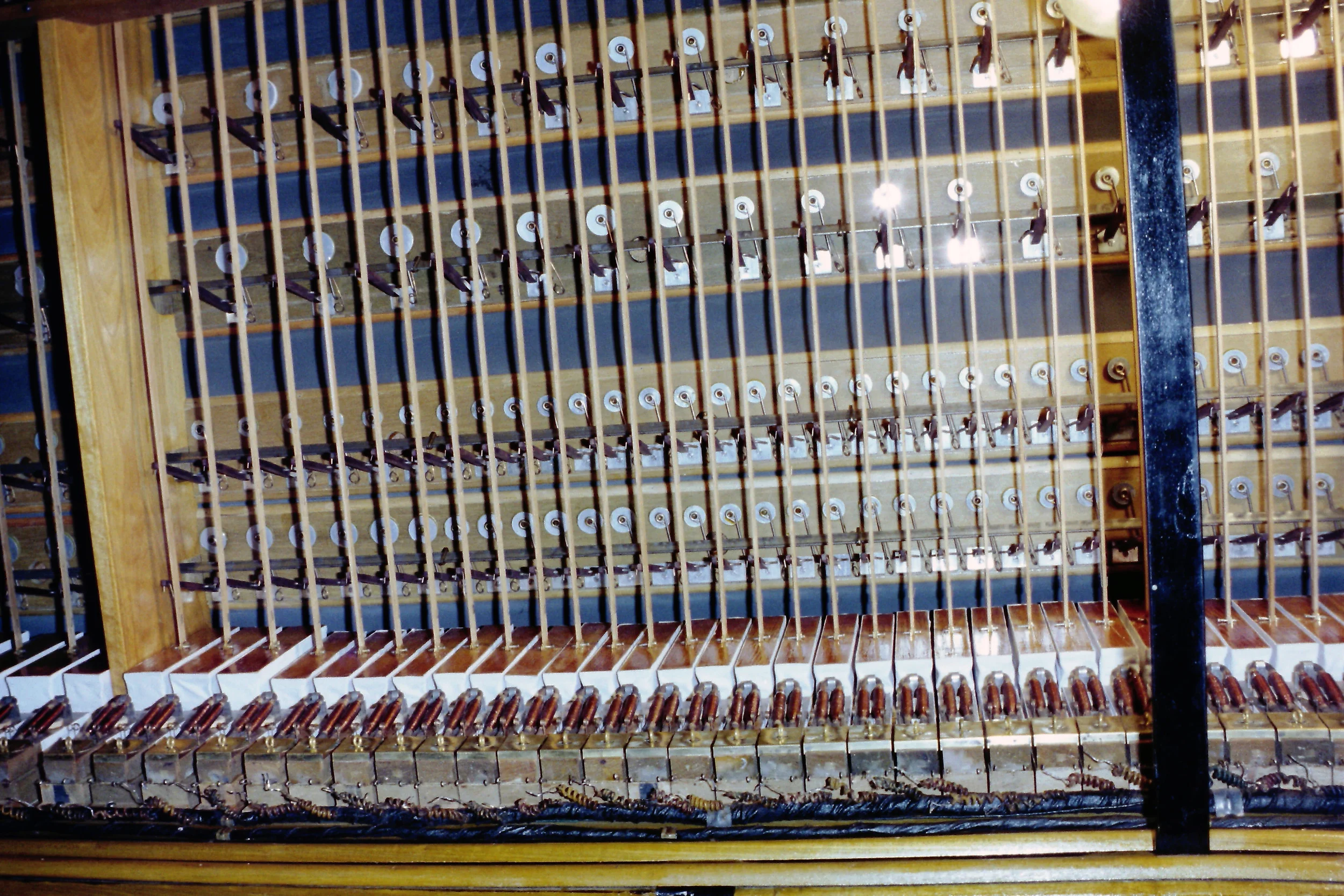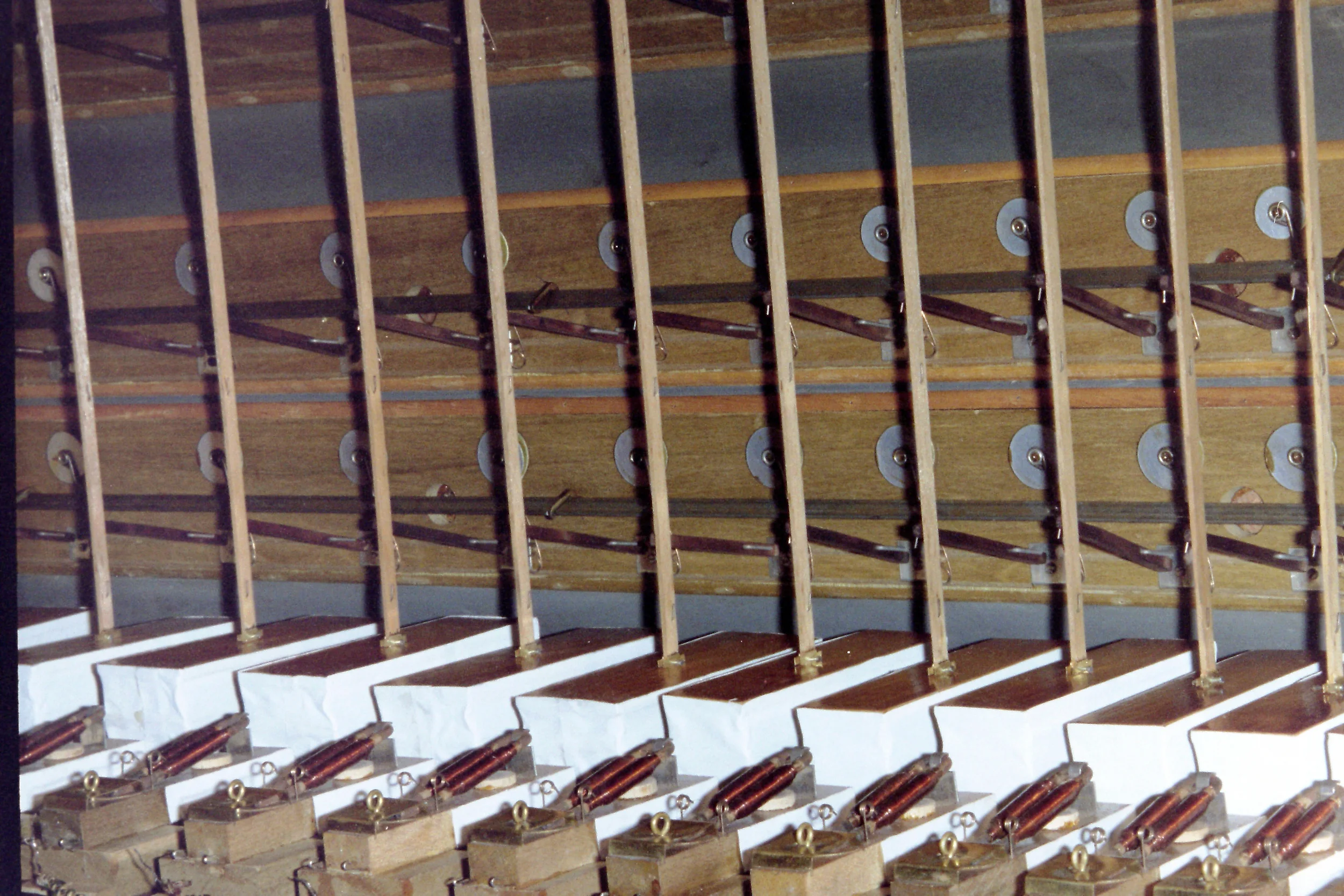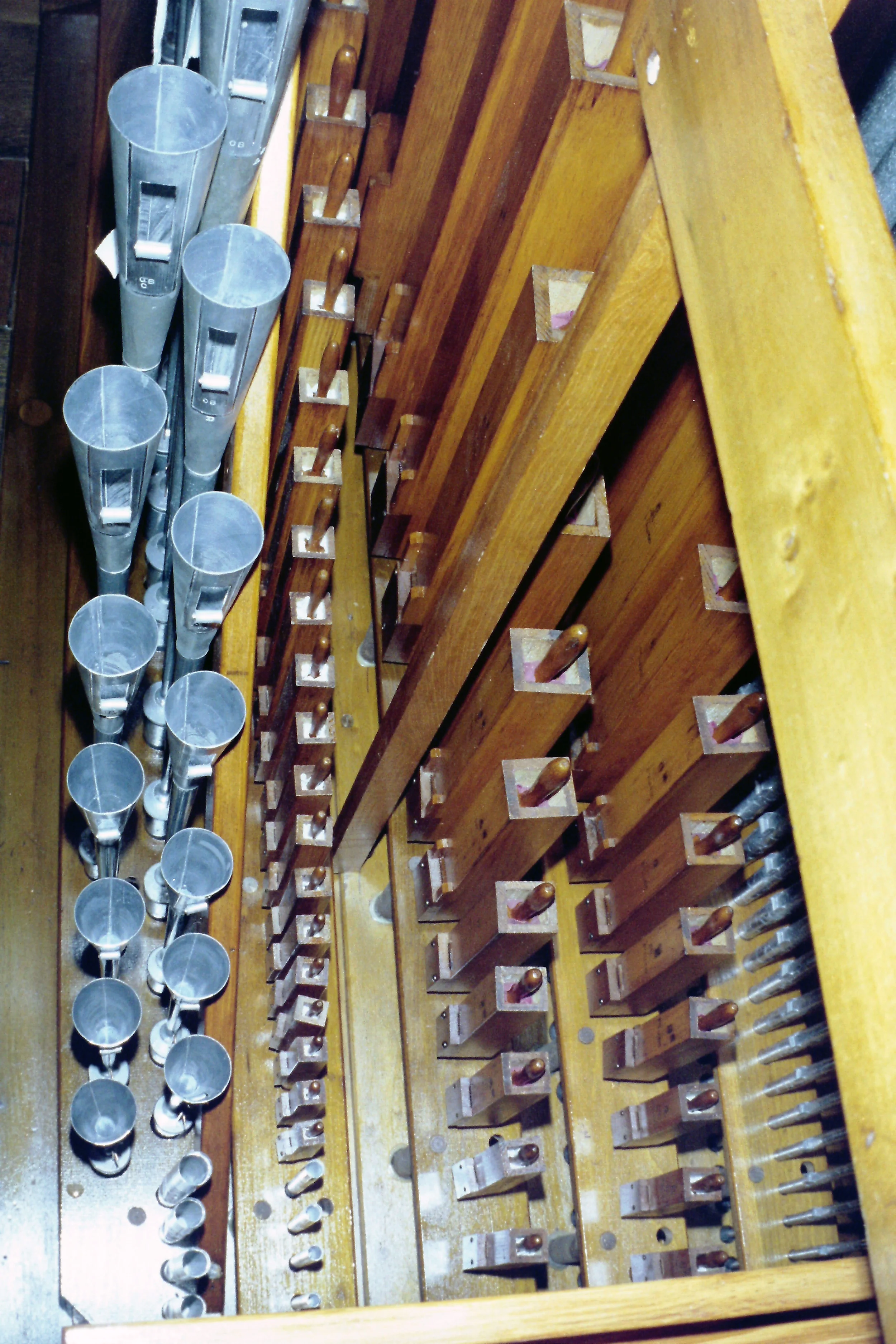Lauralton Hall
Milford, Connecticut
Austin Organ Company, Opus 1221, 1924
When the Laurelton Hall School for Girls built their chapel in the mid-1920s, a small rear balcony was provided to hold a pipe organ, in this instance Austin Organ Company’s Opus 1221. Because the balcony has a very low ceiling, the organ was allowed to project up beyond the ceiling line, and the architect provided a short and direct tone chute to convey the sound into the chapel. The console is placed immediately in front of the organ and is the normal electro-mechanical console so successfully built by the Austin firm for many decades.
The entire organ is placed in one swell box, with the pipes of the Great division at the front and those of the Swell division to the rear. Since the instrument is of modest size, both Great and Swell divisions are provided with loud and soft stops, from the commanding Diapason of the Great to the delicate Aeoline of the Swell Organ. An Oboe having Trumpet shallots is provided, and thus serves as a solo voice and an ensemble stop equally effectively. Two of the unison flutes are extended to 16’ pitch in the Pedal division, allowing for both a gentle and a forte bass in this department.
When the mechanism of the organ began to fail after three-quarters of a century, a generous friend of the School provided the funds needed to completely restore the pipework and mechanism of the organ. All of the pipes were removed, cleaned and put on a voicing machine to restore the original builder’s settings. No attempt was made to change the sound of the instrument, but rather the note-to-note regulation was carefully reestablished.
Likewise, the mechanism of the organ, which is built on the normal Austin Organs Universal Air Chest design, was taken to pieces and painstakingly rebuilt as new, replacing all of the perished leather membranes with new leather of the finest type available. The very large regulator at the rear of the organ was removed and completely releathered, so that all of its corner gussets and hinges will last another seventy-five years. Finally, all of the mechanism and pipework was given a fine-regulation on site.
The rebuilt organ is both versatile and attractive in sound, providing an ample choice of softer colors and yet enough power to lead a hymn effectively. For less than the cost of an electronic substitute, the chapel’s organ was returned to like-new condition, ready to serve for many more decades. Thus was not only a fine example of American organ building from the early part of the 20th century preserved, but at the same time a familiar and appropriate instrument was returned to duty.


